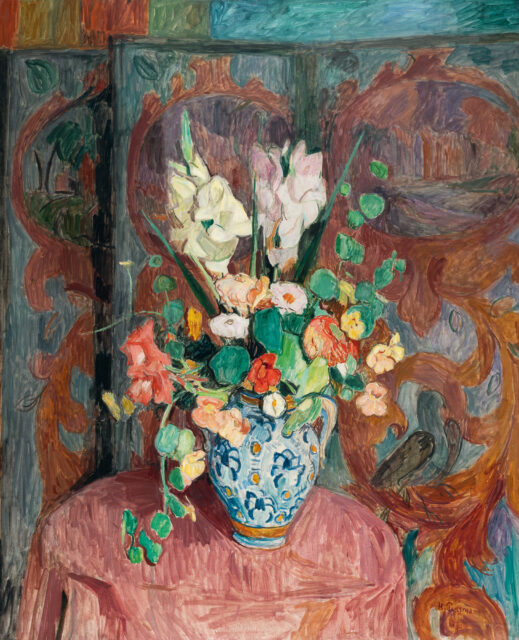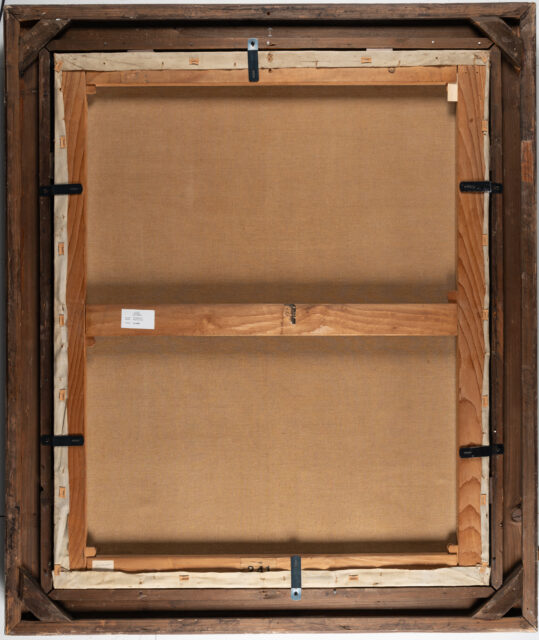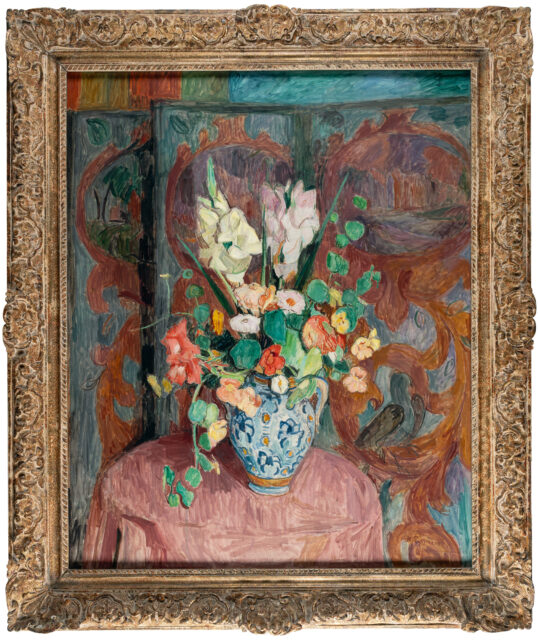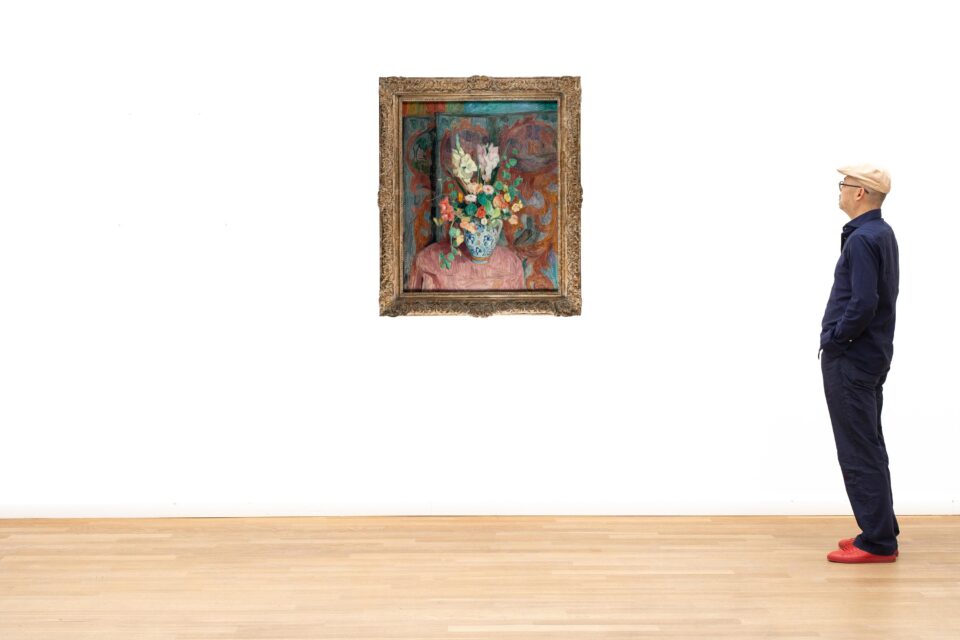Still life with gladioli and nasturtiums
Details
With customs labels, remnants of a label and a label numbered “321” on the reverse on the stretcher. With various handwritten notes, numbers and inscribed with the technique and dimensions on the reverse on the frame. Lenz/Billeter 1926/12. Provenance: Kunsthandel Let. al. Lichtenhan, Basel, inscribed by hand on the reverse of the frame; Ottilie Voigt, Romanshorn, presumably acquired from the aforementioned; private ownership, Karlsruhe, preserved by descent; private ownership, Hamburg, passed down in the family to the present owner; private ownership, Baden-Württemberg.
Description
• Great master colourist of modernism
• Purrmann achives a tense union through the combination of blue and orange, red and green
• Purrmann’s passion for collecting rare objects is revealed in this work
Hans Purrmann was born in Speyer in 1880 as the son of a painter and plasterer. After early positions at the Karlsruhe School of Applied Arts and at the Academy in Munich under Franz von Stuck as well as at the Académie Matisse in Paris, he found his own artistic style, which reflected his preference for light-flooded interiors, Mediterranean landscapes and still lifes. Although his painting reveals the influence of the French painters Matisse, Cézanne and Renoir, Purrmann has found his own style, combining form and colour in impressive works. According to Robert Purrmann, the artist’s son, this undated, large-format painting “Still Life with Gladioli and Nasturtiums” was created in 1926 in Langenargen on Lake Constance. Purrmann spent his summers there with his family after purchasing a fishing house right on the lake in 1919. Purrmann’s passion for collecting paintings, prints, carpets, antiques and rare objects comes to the fore in the present work. The magnificent majolica vase with floral decoration filled with gladioli, zinia and nasturtiums, which stands in the centre of the picture on a small round table with a tablecloth, can be found in several of the artist’s still lifes. Purrmann’s collectibles repeatedly find their way into his works. Purrmann captures the vase as well as the flowers in fine, precise brushstrokes using bright yellow, red, green and blue tones, emphasising them through the use of otherwise earthier colours. Purrmann’s love for materials, which he shared with his friend and teacher Matisse, plays an important role in the background of the picture. The colourful ornamental screen can be found in other works by Purrmann and appeared in interior scenes from his studio in Langenargen as of around 1920. Purrmann incorporates the screen, which is somewhat muted in colour, into the depiction in its entirety. The various layers of the image seem to merge: the viewer has the feeling that the depictions on the screen combine with the flowers and the handle of the vase. The parrot shown on the right edge of the screen appears almost real. Despite this perceived connection between the objects depicted, their intrinsic value remains intact. The fullness and lushness of the depiction are what gives this still life its power. The work is an impressive example of Purrmann’s love for this subject. Elke Hergert gave a speech in 1995 on the occasion of the exhibition “Hans Purrmann. In the Light of Colour” about his still lifes: “By modulating the colours, starting with the four tones of blue and orange, red and green, Purrmann achieves a tense unity that can be underlined using the words of Matisse: You have to plan big and clearly in order to be able to create three or four correct contrasts; the further meaning of the colour is expressed between these. Painting is nothing but the observation of the relationships between colours; you have to see in the ensemble (…)”.
* All results incl. buyer’s premium (27%) without VAT. No guarantee, subject to error.
** All post-auction prices excl. buyer's premium and VAT. No guarantee, subject to error.
*** Conditional Sale: The bid was accepted below the limit. Acquisition of the work may still be possible in our post-auction sale.
R = regular taxation
N = differential taxation on works of art which originate from a country outside of the EU
The private or commercial use of images shown on this Website, in particular through duplication or dissemination, is not permitted. All rights reserved.






